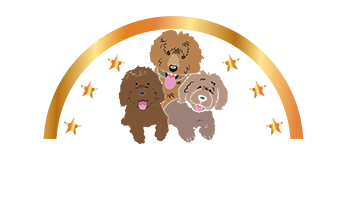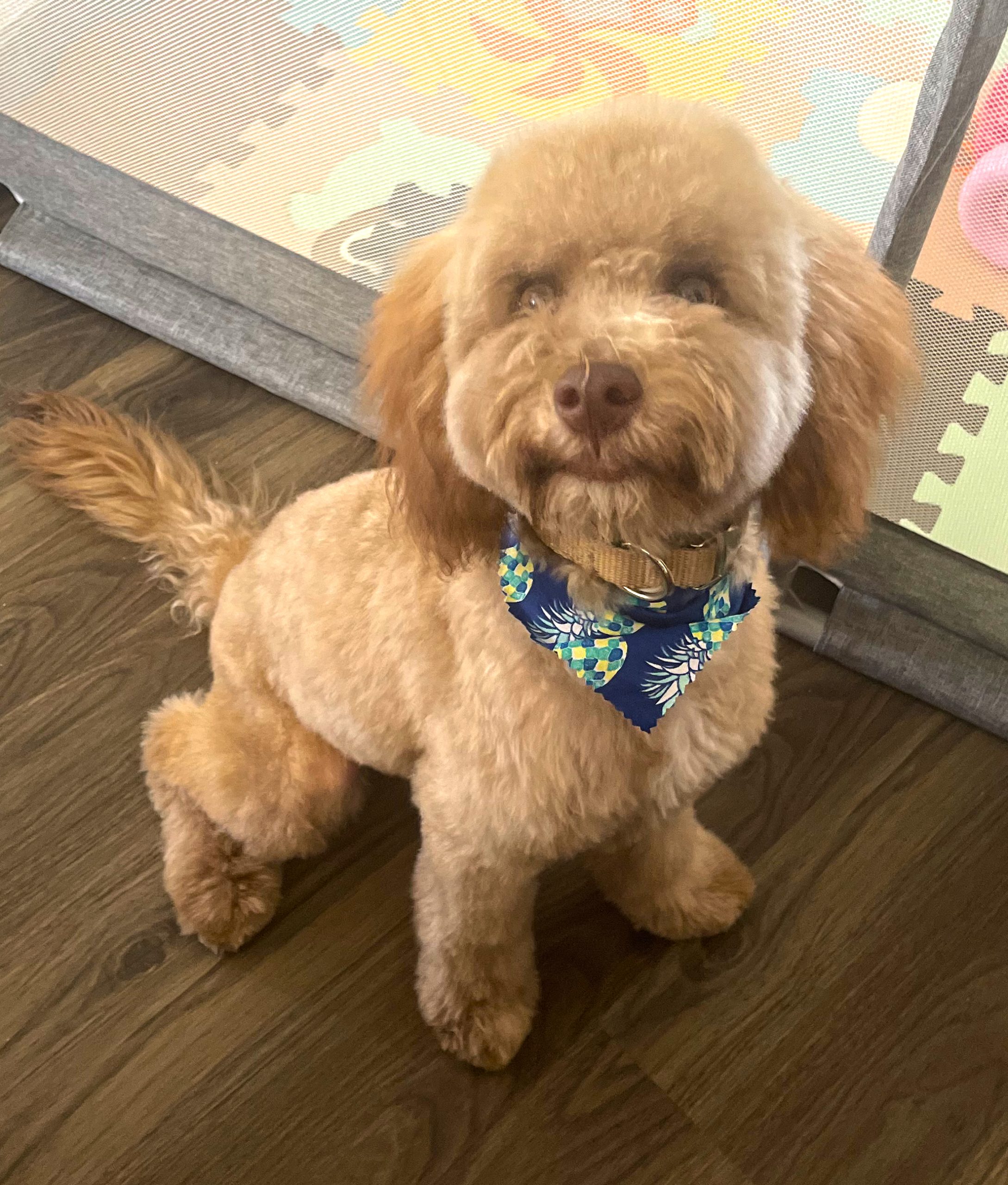
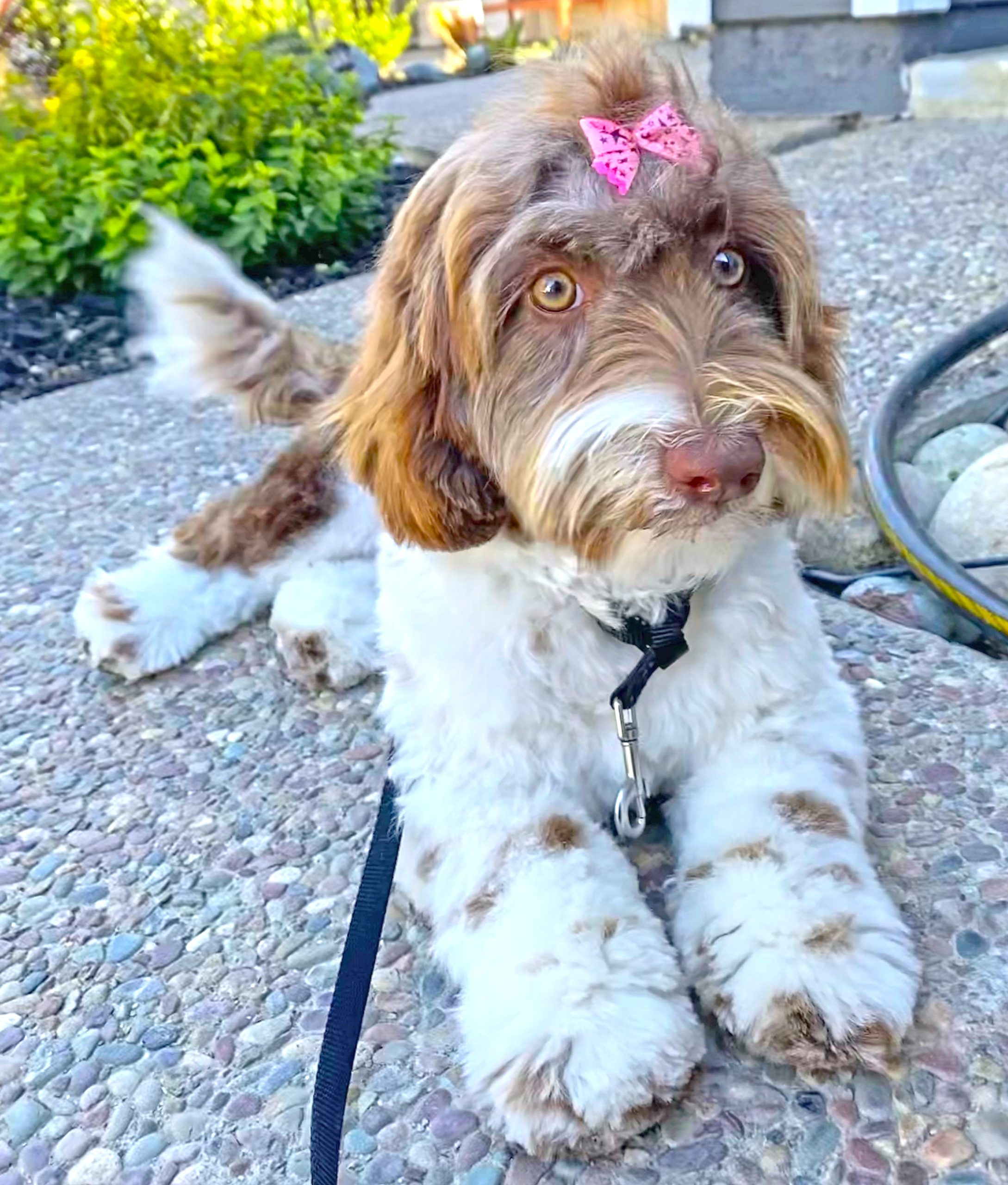
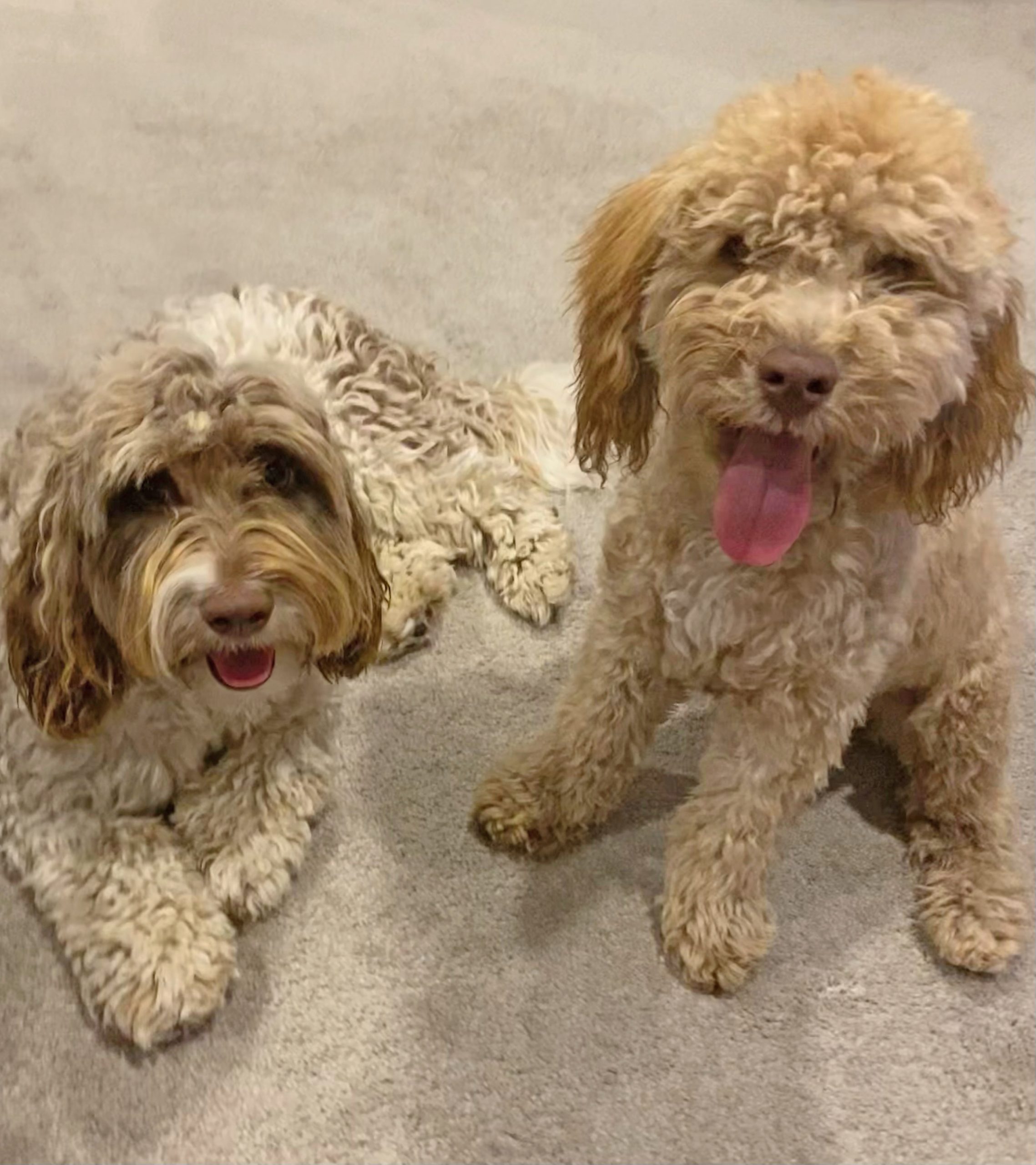
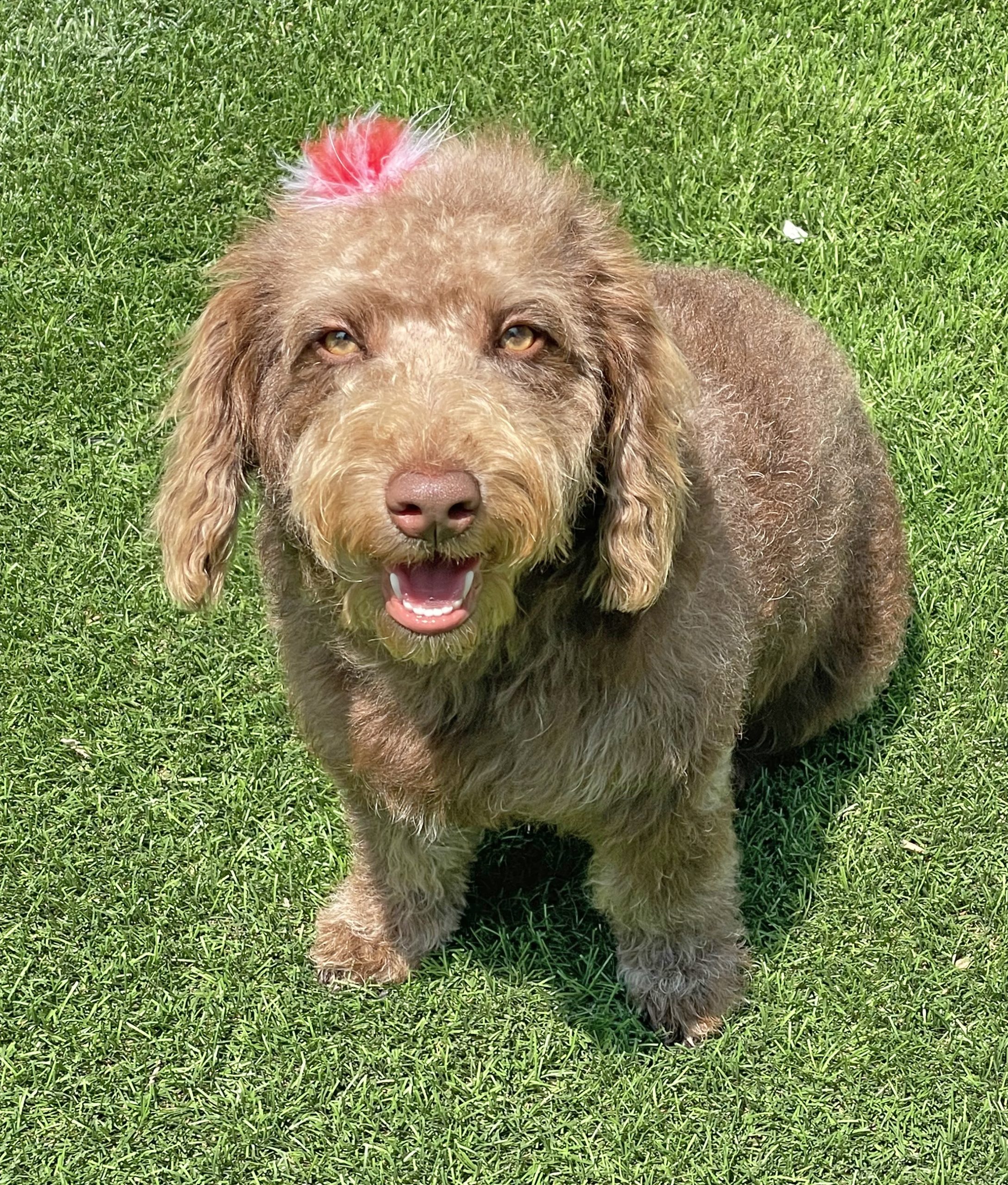
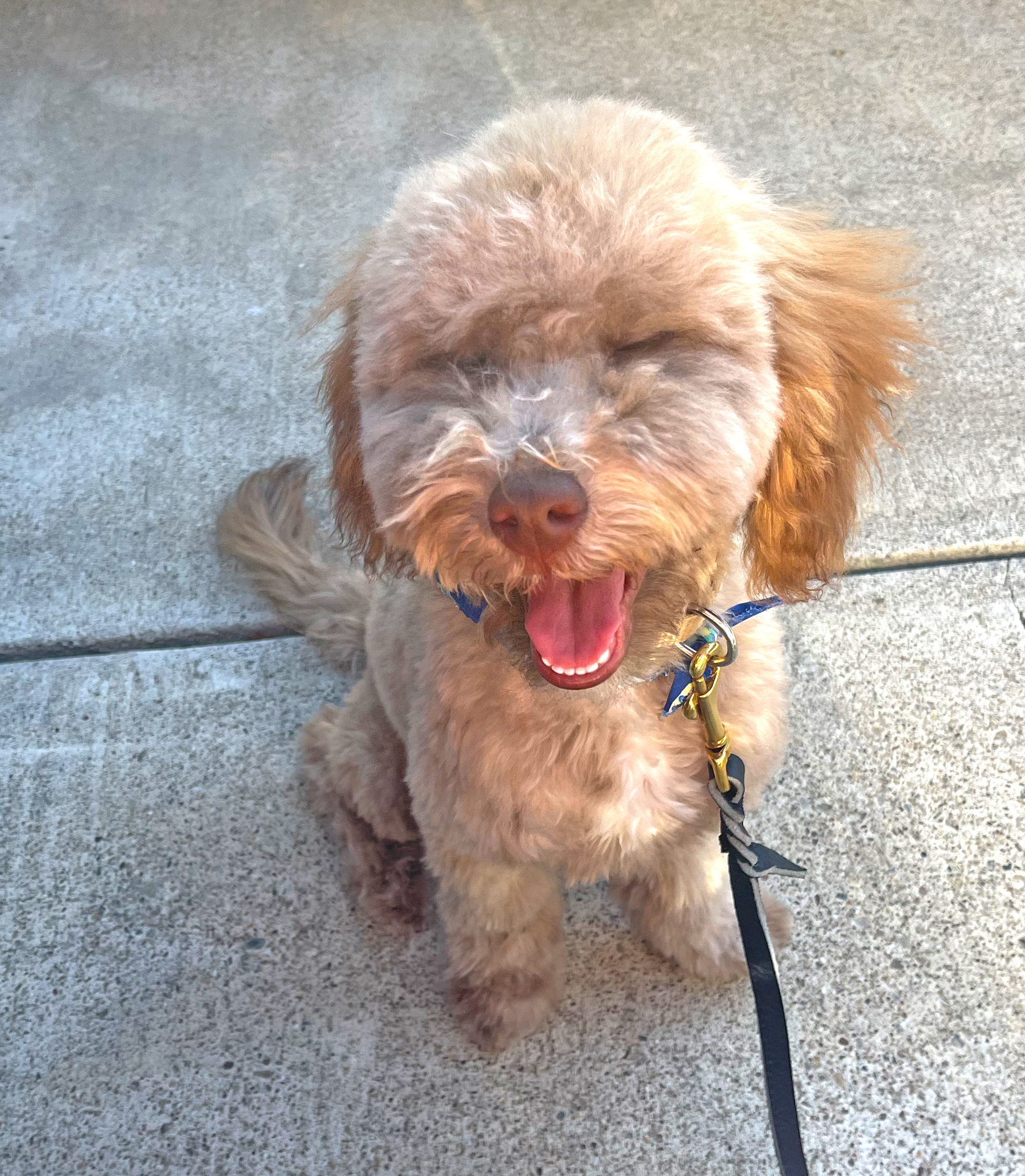
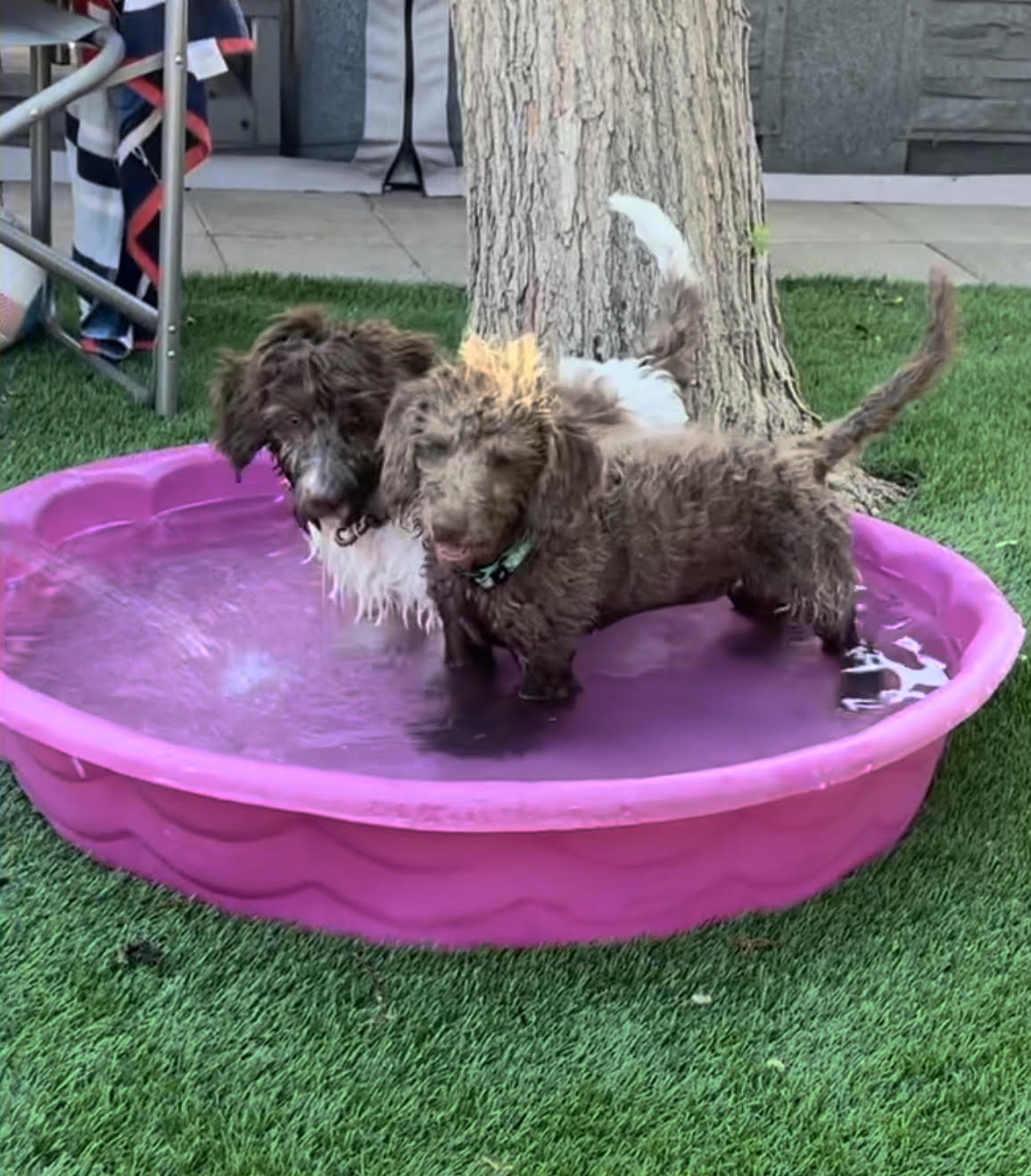
History of the Labradoodle:
The Labradoodle is a hybrid between a Poodle and a Labrador Retriever. This mix was first found in Australia when some breeders started to produce a non-allergenic guide dog.
In 1998, a man named Wally Conron crossbred a Labrador Retriever with a Poodle, both purebred, for Australia’s Royal Guide Dogs Association.
Upon request, Wally Conron bred the first mix of Labradoodle for a visually impaired woman in Hawaii. She had a special request for a guide dog that wouldn’t further flare up her husband’s allergies.
So, to achieve a non-allergenic dog, breeding Labradors with a non-shedding dog was the requirement. Hence, they picked the Standard Poodle to breed with their Labrador Retrievers. The Poodles’ curly hair neither sheds nor causes dandruff, and therefore they were of great attraction to many.
Thus, this was how he soon developed the Labradoodle breeding program. And now, many breeders have been developing the breed ever since.
The first-ever Labradoodle to exist was a dog by the name of Sulton. Wally Conron’s dog was specially bred to serve as a guide dog to allergic owners. Thus, Sulton was a massive success because the dog’s coat was non-allergenic, plus he had the intelligence to serve as a service dog, hence, comfortably meeting both the requirements. (Dr. Patrick Elliot)
Labradoodle Types:
Because there are different kinds of Poodles and Labrador Retrievers, it only stands to reason that there will be different Labradoodles types.
- American Labradoodle
The American Labradoodle is another name for the standard Labradoodle-type dog bred from a Poodle and a Labrador Retriever in the United States. These dogs do not necessarily have to be a 50-50 cross of Poodle and Lab blood; the Labradoodle can also be bred from the offspring resulting from the first-generation crossing of a Poodle and Labrador Retriever.
- Australian Labradoodle
The Australian Labradoodle is very similar to the American Labradoodle in many ways, but there may be more than just Poodle and Labrador Retriever genes used in the crossing. Australian Breeders Tegan Park and Rutland Manor are generally credited with developing the Australian Labradoodle breed and, in addition to the Poodle and Labrador Retriever genetics, some of the other breeds used in the development may include the following:
- Irish Water Spaniel
- Curly Coat Retriever
- American Cocker Spaniel
- English Cocker Spaniel
Because the Australian Labradoodle has not been recognized as a separate breed there is no set breed standard – Australian Labradoodle dogs may exist with other species used in their pedigree. (Susanne Saben)
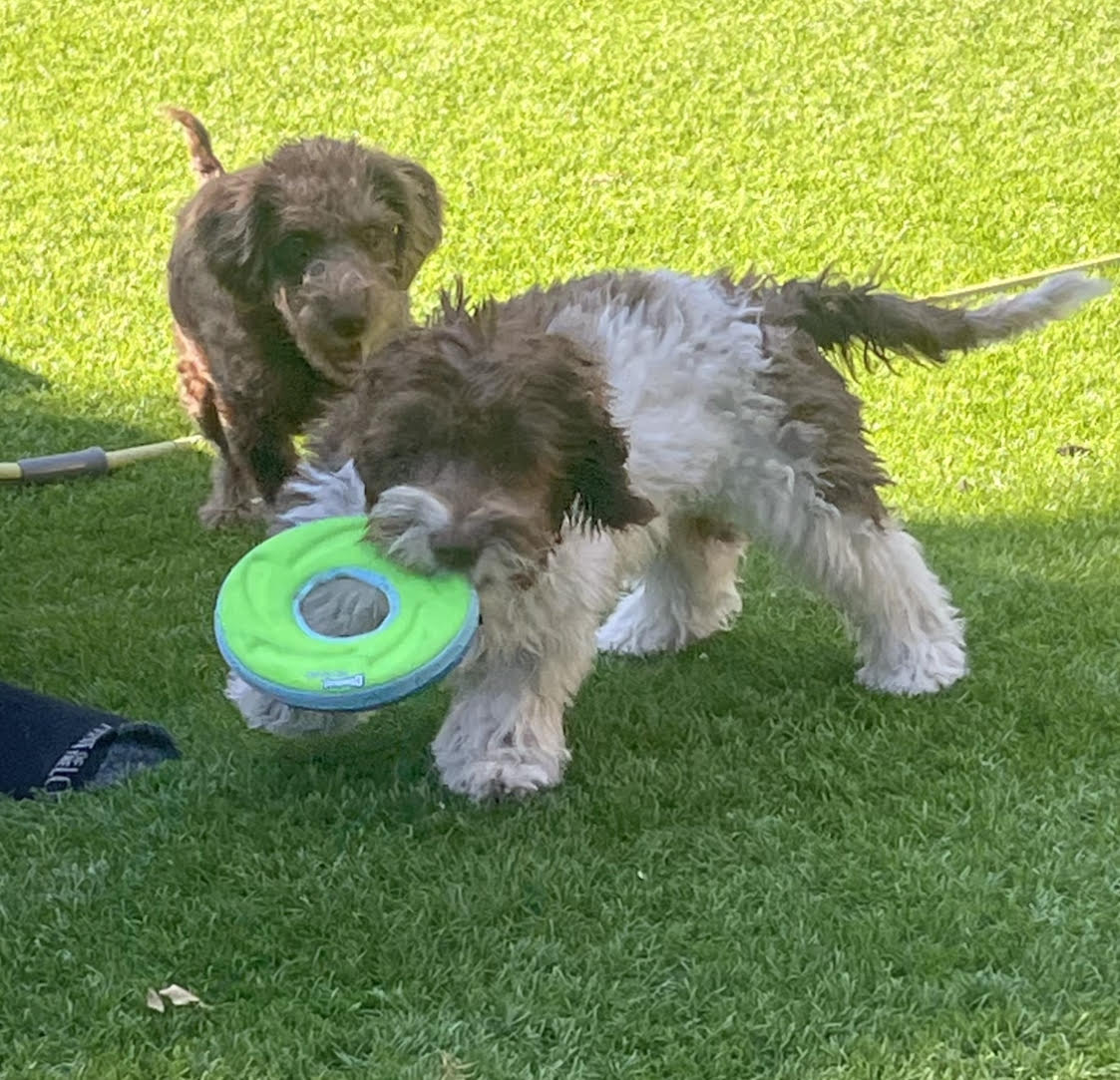
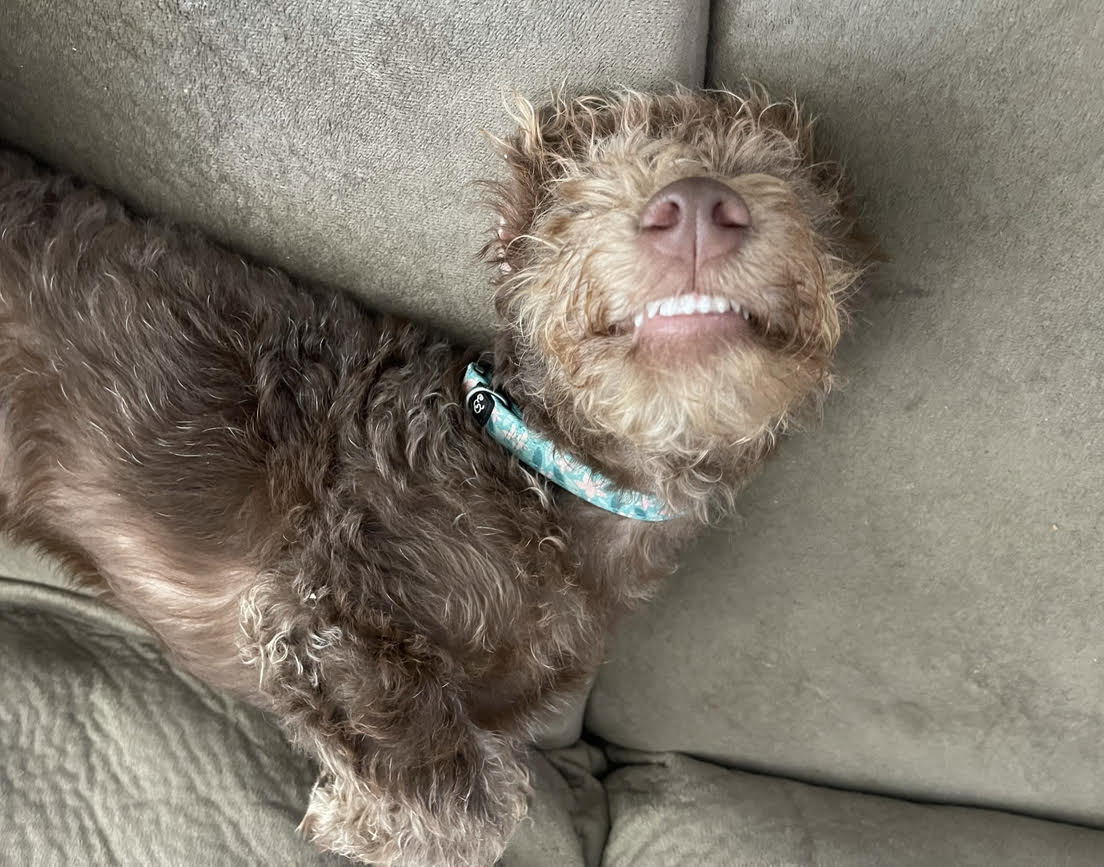
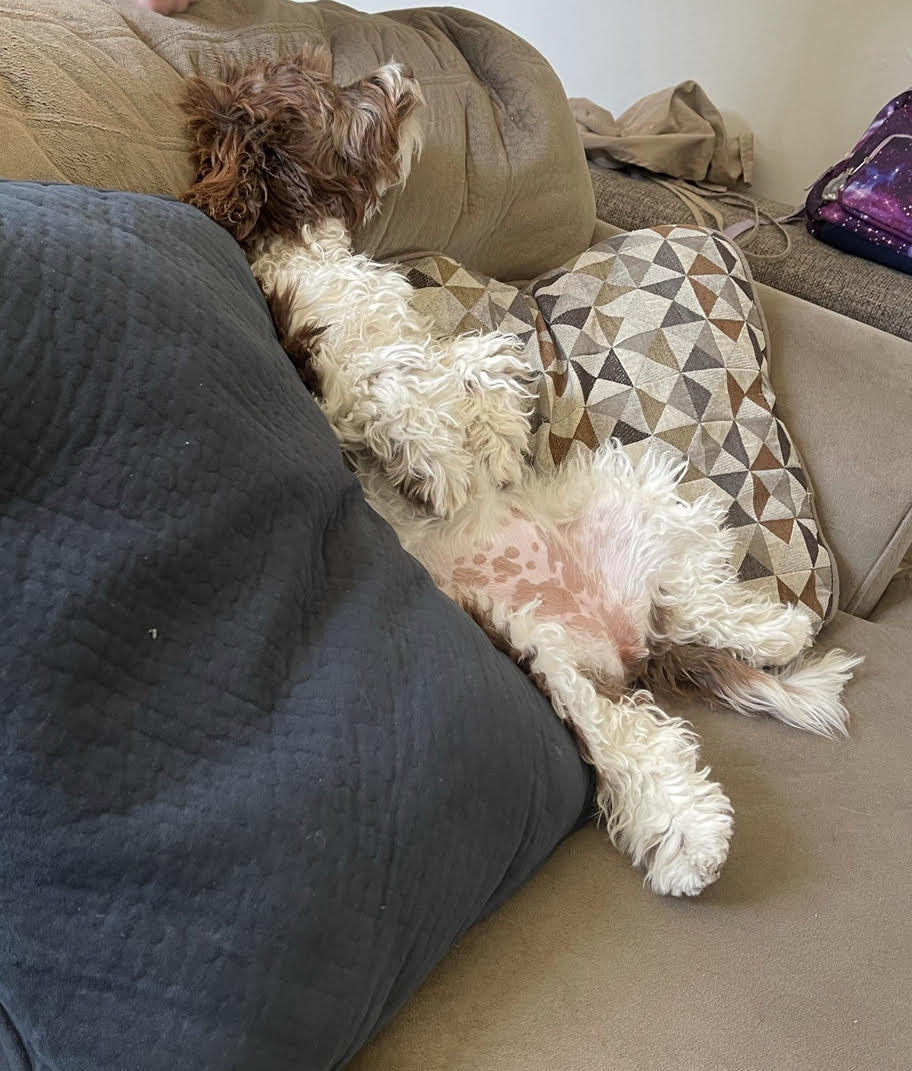
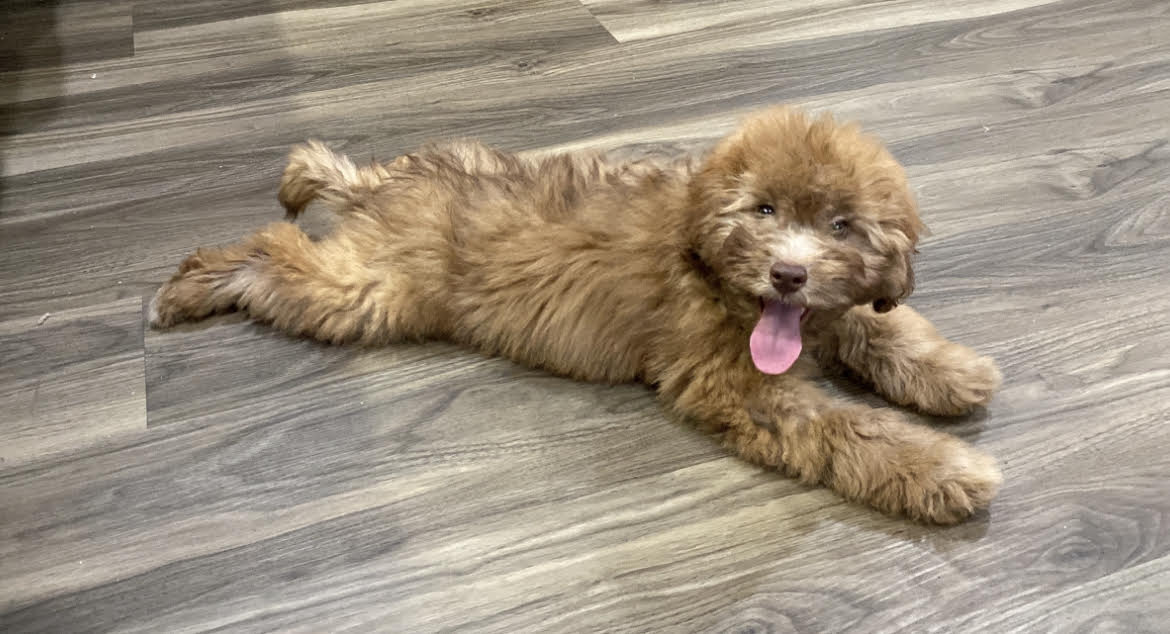
Labradoodles Sizes:
There are 3 basic sizes of Labradoodles.
Because the Labradoodles are cross, they will vary in size. These are the most common sizes, weights, and heights.
- Standard – 50 – 65 lbs – 21-24 inches
- Medium – 30-45 lbs – 17-20 inches
- Miniature – 15-25 lbs – 14-16 inches
Some breeders are now developing micro-sized Labradoodles, which are under 15lbs.
Generation Types of Labradoodles:
(differences between the f1, F2’s F1B’s)
F1 = The result of breeding a purebred Poodle with a purebred Labrador Retriever
F2 = The result of breeding two F1 Labradoodles
F3 = The result of breeding two F2 Labradoodles
F4 = The result of breeding two F3 Labradoodles
F1B = The result of breeding an F1 Labradoodle with a purebred Poodle
F2B = The result of breeding an F2 Labradoodle with a purebred Poodle
Multigenerational = The result of breeding an F1B Labradoodle with an F1B Labradoodle
When you breed a purebred Poodle with a purebred Labrador Retriever, which produces an F1 Labradoodle litter, each puppy is guaranteed to have 50% genetics from each parent. However, this is not the case for any other breeding combinations such as F1B or F2, etc… This is because each puppy will receive a random percentage of the original parents’ physical and behavioral genetics. The combination will always add up to 100% for example, the puppy may be 10% Labrador and 90% Poodle genetically. The illustrations presented are general examples of the entire F1 and F2 genetics population for Labradoodles. There is no guarantee of the genetic percentages of any dog except purebreds and F1.
Coat Type in Labradoodles:
Because the Labradoodle is a crossbreed, there is always uncertainty about how the coat will look. Nonetheless, these are the recognized types of coats for Labradoodles.
Wavy or shaggy: also called fleece: little to no shedding – long, soft, and fluffy (most desirable) highest maintenance.
Curly or woolly: little to no shedding – usually shorter and coarse (mainly found in F1B) medium to high maintenance.
Straight or flat: light to heavy shedding (mainly found in F1, F2) Lowest maintenance.
Coat Colors of Labradoodles:
The Labradoodle comes in many different colors.
- Abstract (less than 50% white with another solid color)
- Apricot (also called gold, may fade in time)
- Black
- Blue (grey looking)
- Brindle (layering of black and brown or other colors)
- Cafe’
- Carmel (a rich gold)
- Cream (sometimes called apricot or light gold)
- Chocolate (dark and rich, born almost black)
- Lavender (born chocolate and turns lavender at 1-3 years)
- Multi-patterned (containing more than two colors)
- Red (can fade as the dog grows older)
- Sable (a mixture of gold and silver or black)
- Silver (light pewter to dark charcoal)
- White (sometimes called chalk)
- Parchment (creamy chocolate)
- Parti (black and white, could be white with another color)
- Phantom (solid base color, markings of a second color)
- Sable (solid colors with black-tipped hairs)

